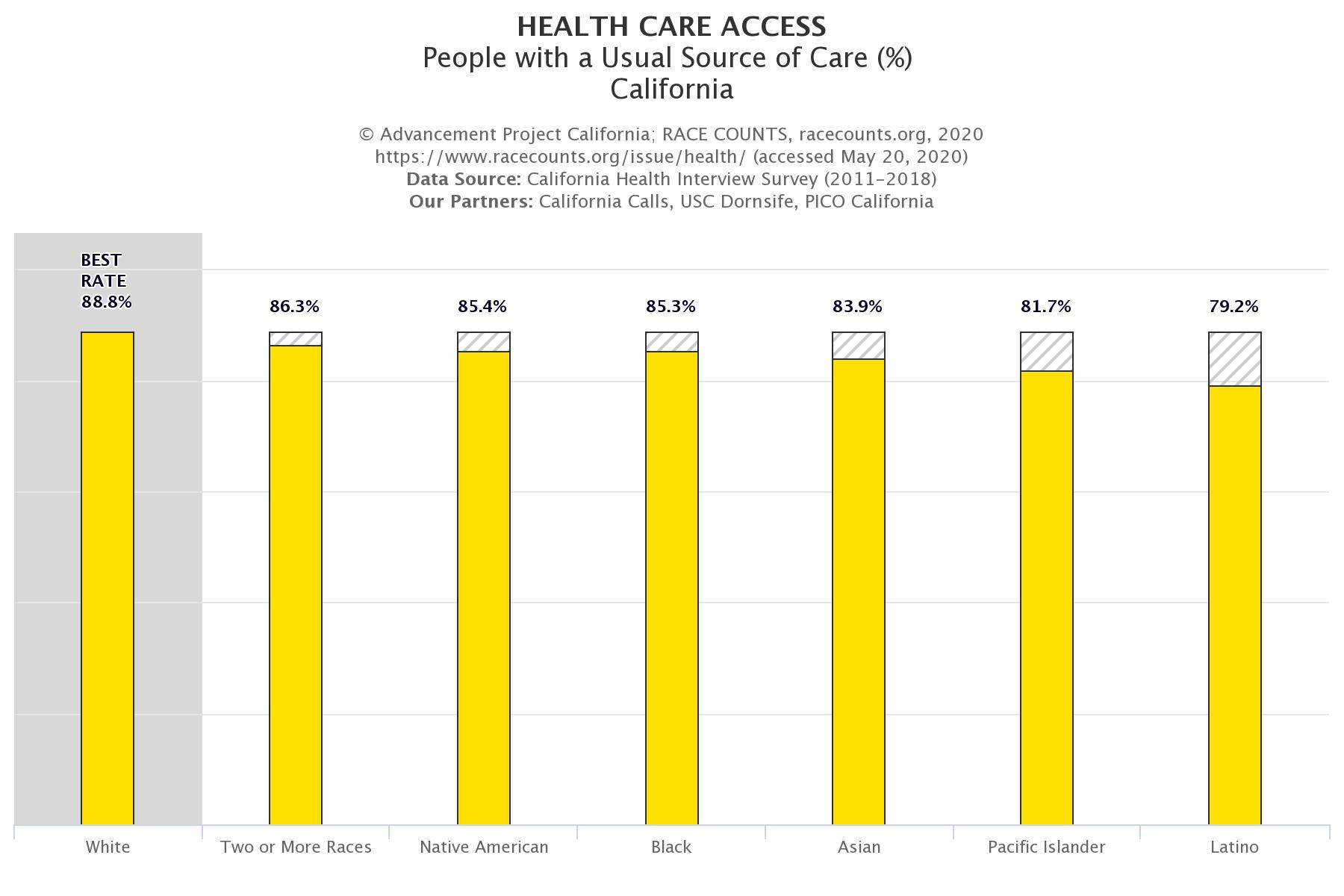
Updated statistics on having a usual source of health care from the California Health Interview Survey are now available on RACECOUNTS.org. These estimates include people who usually go to a doctor’s office, HMO, community clinic, government clinic, or community hospital for health care. They exclude estimates of people with no usual source of care, or who use the emergency room, urgent care, or some other place as their primary health care location. Having a usual source of care is a critical foundation to good health, especially for people with chronic medical conditions.
Performance: 84.1% of Californians reported a usual source of care between the years 2011 and 2018. Napa County had the highest usual-source-of-care rate with 91.8% of its population having usual access to a doctor’s office, HMO, community clinic, government clinic, or community hospital for health care.
Disparity: Statewide, Whites have the highest usual-source-of-care rate (88.8%) and Latinxs the lowest (79.2%). El Dorado County reported the greatest – though not statistically significant – disparities in usual-source-of-care rates, with county non-Latinx Whites having substantially higher usual-source-of-care rates (89.3%) than Latinxs (76.2%), and Asians (64.6%).
Impact: The California Health Interview Survey estimates that 31,808,000 Californians had a usual source of care between 2011 and 2018. Latinxs were numerically, the largest racial/ethnic group without a usual source of care: an estimated 3,060,000 Latinxs lacked a usual source of care.
Click here for data.